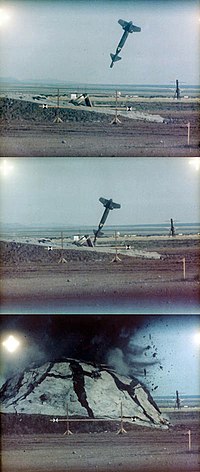
Photo from wikipedia
This paper focuses on the development of a guidance methodology for the planning of multiple ground target acquisition. Specifically, the work addresses the problem of the lack of an attitude… Click to show full abstract
This paper focuses on the development of a guidance methodology for the planning of multiple ground target acquisition. Specifically, the work addresses the problem of the lack of an attitude guidance planner (AGP) aboard a remote sensing satellite. In general, the guidance is computed offline and uploaded by ground control to the space segment, i.e., satellites are not responsible for the guidance generation but they only perform control algorithms to track the guidance profiles provided by the ground segment. Overall, this limits the mission flexibility and efficiency, affecting the capability of autonomous satellite decisions. This choice is driven by the fact that the numerical algorithms used to optimize the attitude guidance trajectory require high computational effort to be implemented directly on the satellite computer. Therefore, the aim of this work is to design an analytical AGP solution to solve this problem by requiring low computational effort, making it suitable for real-time applications on on-board flight hardware. In this way, the satellite’s guidance, navigation, and control (GNC) module would become completely autonomous and independent of ground control, which will only have to indicate the targets to be acquired so that the satellite can generate its own guidance for the GNC module. The AGP analytical solution for multiple ground target acquisition is evaluated by means of phases: the first phase is named the APPG (attitude point-to-point generator) and it aims to generate the point-to-point guidance to start the ground target acquisition. The second phase is named the ATPG (attitude target pointing generator) and it generates the reference guidance to maintain the payload view axis pointing toward the ground target. The two phases joined together give the whole guidance needed to observe ground target points by means of an analytical closed-form solution.
Journal Title: Symmetry
Year Published: 2022
Link to full text (if available)
Share on Social Media: Sign Up to like & get
recommendations!